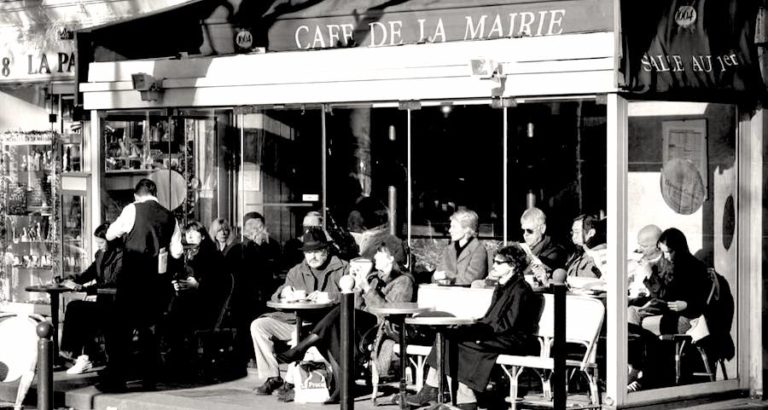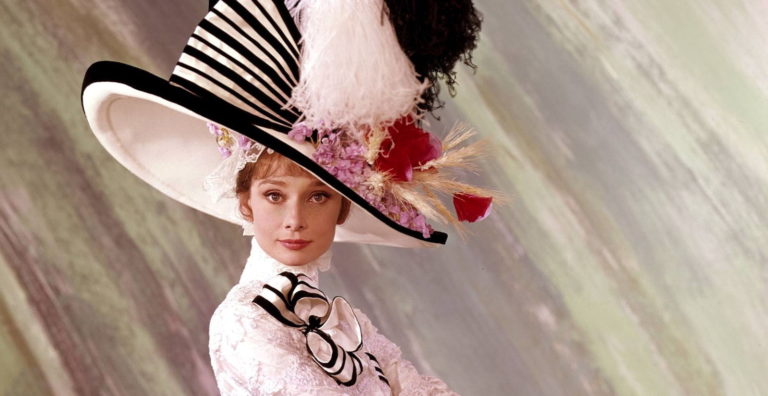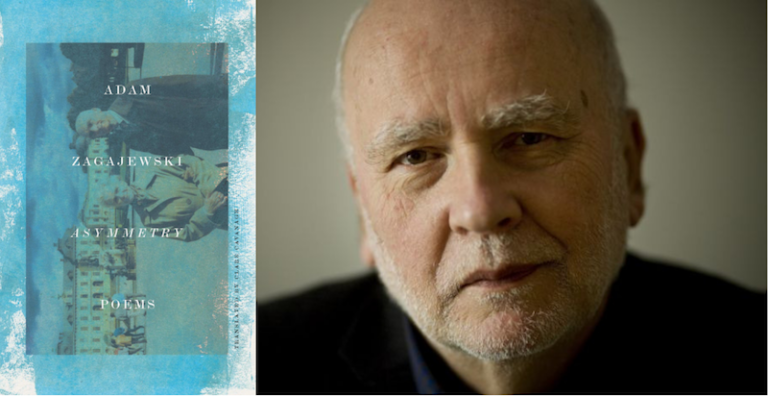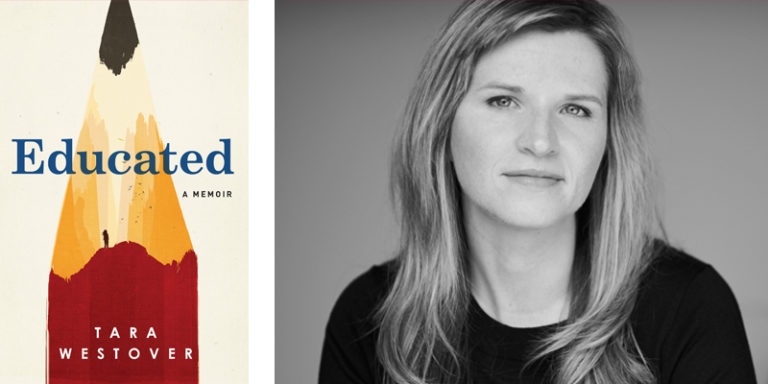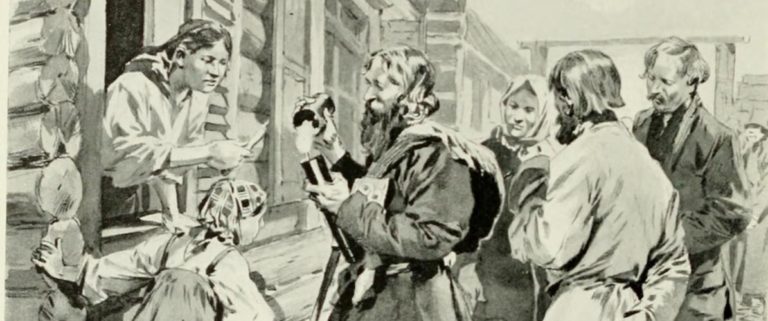![]()
I blame my first marriage on Jane Austen. Elizabeth Bennet married for gratitude and esteem, and these were exactly the feelings I had for my first husband. If they were good enough for Elizabeth, why wouldn’t they be good enough for me? But I wasn’t Elizabeth; I was much more like Emma, a far more flawed heroine. The romantic Emma would never have been satisfied with gratitude and esteem, and neither was I. To be fair, I know my husband felt the same way, although I don’t think he blamed Austen for his mistake.
For better or worse, my hasty marriage was simple to undo—at least with respect to its legal and social aspects. For my next chapter, I returned to graduate school, pursuing a doctorate in English literature and specializing in Austen and other novelists of her time. Had I been a more daring scholar, I might have realized that my youthful folly had posed some interesting questions: Why did I look to Austen and her characters for guidance about how to live my own life? And I’m not, by far, the only one to do this. Surely this trust couldn’t be separated from the great love I had for Austen. Why do so many people love Austen so intensely, and in such a personal way?
Austen certainly isn’t the only literary celebrity among Anglo-American authors whose work inspires interest in her life. Captivated by the dark drama of Wuthering Heights, we visit Haworth, home of the famous Brontë family; drawn into Emily Dickinson’s poetic vision, we tour the unassuming clapboard farmhouse where she slowly retreated to a life of solitude and poetry. Nor is Austen the only author who’s created realistic characters. Nathaniel Hawthorne said that Anthony Trollope’s novels were “just as real as if some giant had hewn a great lump out of the earth and put it under a glass case, with all its inhabitants going about their daily business, and not suspecting that they were made a show of.” Indeed, readers tend to think of characters as real people when they read, especially when they read novels. One reason we read for the plot is that we want to find out what happens to people we’ve come to know and care about.
Nevertheless, Austen exerts a power above and beyond that of most other authors: She has a fandom rather than a following, readers whose devotion goes well beyond literary appreciation to infuse many aspects of their lives. “Janeites,” the term for Austen devotees, are more like Trekkies than Brontë enthusiasts; many are willing to dress in Regency fashion at the annual meeting of the Jane Austen Society as easily as a Trekkie dons the Federation uniform at a Star Trek convention. Many, like myself, find guidance about how to live their lives in Austen’s work. But unlike Trekkies, who are more absorbed by the Star Trek world itself than by the writers who created it, Austen fans idolize the author as well as her works. Austen is our beloved wise cousin, our ally in the quest for the good life.
Alas, the puzzle of Austen’s influence didn’t dictate the path of my scholarly research. In fact, musings of this kind were actively discouraged by the intellectual climate in many English departments of the time. At the elite institution I attended, thinking about characters as real people was strictly taboo, the sign of naïveté and ignorance. Doctoral candidates were expected to be professional readers who realized that every “text” (we didn’t call them books or novels) consisted of words on a page and nothing more. We were being trained to decode, not to read. Many of us still harbored a “naïve” love of literature and authors, but this was our shameful secret, the madwoman who lived in hidden rooms in the attic.
It would take another 20 years and a late-flowering passion for psychology to prompt me to search for the reasons for Austen’s allure. At this point, I was reading book after book on psychology and neuroscience while also taking courses in the mind-brain sciences. I began to publish essays on the connections between literature, psychology, and the brain, and to teach on that subject as well. Thinking about Austen in the context of the mind and the brain, I was now able to find an answer to my question: So many of us love and trust Austen because she possessed extraordinary powers of empathy.
Empathy means seeing the world from a different perspective, walking a mile, or even a moment, in someone else’s shoes. It means actually experiencing, although in a weaker form, another person’s state of mind, while also maintaining your own perspective. So if a friend is panicking, becoming anxious yourself wouldn’t be true empathy but rather emotional contagion. Empathy means understanding your friend’s panic while at the same time realizing that the anxiety of the moment is hers, not yours.
Austen has a fandom rather than a following, readers whose devotion goes well beyond literary appreciation to infuse many aspects of their lives.
Such perspective-taking involves thinking and feeling. Empathy’s cognitive aspect requires theory of mind (ToM)—also known as mentalizing, or a reflective capacity—which refers to the ability to infer other people’s beliefs and intentions from their behavior. This includes facial expression, body language, actions, and speech. If you see someone come into a room, look around, move papers and books, look under the desk, and then leave with a puzzled expression on his face, you’re likely to think that he was looking for something that he didn’t find.
Theory of mind also includes the ability to recognize feelings, but in a dispassionate, knowledge-based sense. If you see your boss frowning, you realize that he’s displeased about something and that this isn’t the time to ask for a raise. You don’t necessarily enter into his feelings; it’s enough to know what they are. Many sociopaths can often read other people’s feelings accurately, yet they possess zero empathy. Instead of empathizing with pain or sadness or even anger, they use their mentalizing powers to manipulate others.
Empathy is much better known for its emotional qualities. The first of these involves emotional resonance, feeling what someone else is feeling in an intuitive, subliminal mode. Empathy further involves knowing that you’re conscious of another’s feelings, that these are not your own. In everyday usage, the word empathy is used to include sympathy, which means responding in an emotionally appropriate manner—for instance, with compassion for suffering and delight at happiness. A more technical definition of empathy refers to taking another’s perspective and feeling what someone is feeling. True empathy includes both emotional resonance, the pure feeling part, and theory of mind, which includes your awareness that you’re grasping someone’s thoughts and emotions.
Of course, when I say that Jane Austen had empathy, I’m inferring the mental powers of the living, breathing woman who’s no longer with us from the evidence of the written record she left behind. But how else to explain Austen’s array of such differently minded and totally believable characters? For Austen to have created such a variety of convincing imaginary people, she must have been a profoundly astute mindreader of real people. And no one familiar with her work can doubt her compassion for the unfortunate, or her glad participation in the happiness of others. She knew loss and thwarted love in her own life, which enabled her to portray the sufferings of disappointed love. But she could also show the joy of love’s fulfillment. I can think of no other novel in which the happy ending is rendered so poignantly meaningful as it is in Persuasion. Yes, Austen must have possessed a high degree of empathy.
Yet it’s not an abstract appreciation of empathy that draws us to Austen, but the experience of empathy itself. Austen’s uncanny ability to convey what others think and feel allows two kinds of empathy to take place for the reader. The first is the empathy we experience for her characters. Countless people have shared the feelings of these fictional people: Elizabeth’s humiliation on reading Darcy’s reproachful letter, which shows how greatly she’s misinterpreted events (Pride and Prejudice); Marianne’s pain on being rejected by Willoughby, the man she loves with all her heart (Sense and Sensibility); Emma’s sudden realization that no one must marry Mr. Knightley but herself (Emma).
The second experience of empathy is even more crucial: Because Austen understands human nature so thoroughly, we have the sense that she empathizes with us, her readers. To put this in the apt phrase of psychiatrist Daniel Siegel, when we read Austen, we have the feeling of “feeling felt,” of having our innermost feelings understood and resonated with. This is inherently gratifying because as a species, humans crave such understanding. We have a profound need for empathy, to know that we’re not alone with our joys and sorrows.
These two kinds of empathy, of recognizing and feeling recognized, are two sides of the same coin. Austen conveys her understanding of us, her readers, precisely by creating characters that we identify with. And we’re able to identify with Austen’s characters because they mirror our ways of thinking and feeling. In fact, mirroring is an important way that empathy and other forms of resonance are communicated. In person, this happens through facial expressions and body language that imitate, and through speech that restates, one person’s perception of another’s state of mind. You’re likely to convey empathy for a friend’s distress by mirroring her facial expression—a furrowed brow, for instance—and telling her that you’re sorry she’s so upset. You reflect her feelings verbally, with the word upset, and nonverbally, with a furrowed brow.
In telling your friend that you’re sorry she’s feeling bad, you also express sympathy. But this is almost unnecessary because mirroring behaviors do more than simply reflect content; they convey caring. This is because humans automatically perceive mirroring as positive and, in the case of distress, comforting. And the brain knows how to tell the difference between mirroring and simply reacting. So vital is mirroring to conveying understanding and support that counselors who specialize in crisis management and suicide prevention are trained to restate the feelings of the person at risk as a major strategy for alleviating distress; this is known as “reflective listening.”
And so, when we see ourselves reflected in Austen’s work through characters who resemble us and others we know, it’s like peering closely into a two-way mirror: We see Austen behind the glass, watching and understanding. She knows us, and we know that she knows us. We have the feeling of feeling felt.
Other features in addition to Austen’s wide-ranging portrayals of fictional people amplify our sense of empathy. Shared experience makes empathy more likely. If you’ve felt intense grief for the loss of a loved one, you’ll empathize more easily and completely with someone whose grief is of a similar kind. It’s also easier to feel empathy for people who are similar to us; the downside of this is how readily humans as a species fail to feel compassion for those who are of different races, cultures, and clans.
Austen’s subject matter is very much our own, and so contributes to our sense of a shared framework of feeling and experience. Austen famously claimed to work on “two inches of ivory” with “a fine brush,” creating a world that traces the intricacies of human interaction rather than the breadth of human endeavor. She concentrates on interpersonal relationships, an aspect of human life that’s universal. All of Austen’s heroines embark on a search for intimacy with a trustworthy person who can be both a lover and a friend; the allies and adversaries they encounter along the way include personalities of all kinds, rather than the monsters and warriors typical of the hero’s quest.
Such human universals explain why we can relate to literature of many different cultures. Literary critics argue that realism, the extent to which literature can feel true to life, consists of conventions that vary from culture to culture. Nevertheless, some aspects of being human are universal, and we tend to be able to accept the portrayal of such universals as true to life and meaningful, even when they’re set in times and places remote from our own. The literary scholar Patrick Hogan has found that love stories are told in cultures throughout the world, and that the same situations and emotions tend to appear within those stories no matter where or when they were written. We might find much about the Latin classic The Aeneid alien and even alienating, but we can still identify with Dido’s heartbreak when her lover, Aeneas, abandons her. Austen concentrates on this world of ubiquitous feelings and perceptions.
We’re able to identify with Austen’s characters because they mirror our ways of thinking and feeling.
Not only does Austen tell stories of love and friendship of the sort shared by people everywhere, but these take cultural forms that are still easily recognizable to us, our vast advances in technology notwithstanding. We still live in families. We still interact with circles of friends, acquaintances, and colleagues. Marriage and other kinds of intimate partnership are very much a goal for many of us. Austen couldn’t completely anticipate our world, nor transcend many of the limitations of her day—she was insightful but not clairvoyant. And so she writes about universal topics with a limited cast of characters: heterosexual, Caucasian, upper- and middle-class families. Some find her off-putting because of this. But many readers are willing to forgive her for being of her age; they recognize her value, as demonstrated by the breadth and diversity of her global readership. I think her attitudes were progressive, given the limitations of her milieu and that her insights have value for all of us, even if they weren’t written with all of us in mind. But that’s a personal decision.
Austen’s style remains as accessible as her stories. She writes in pithy, crystal-clear sentences, creating novels that are paced quickly enough even for our impatient 21st-century sensibilities. In Austen, the heart of the matter, which is indeed the matter of the heart, is right there; we don’t have to penetrate layers of cultural and stylistic difference to get at it. Because Austen creates a world that has much common ground with our own, there’s a strong foundation for empathy.
Austen’s stories not only convey empathy through mirroring and identification, but they’re about empathy as well—who has it, who lacks it, and how some of her characters deepen their capacity for this important quality. Her novels get us to focus on the experience of empathy (neuroscientists would say they prime us to think about it) by showing its value repeatedly. So we find ourselves reflected in novels that are all about the value of being able to find yourself reflected in other minds and hearts. Yet we’re not fascinated by empathy because it’s brought to our attention, but rather we pay attention because empathy is essential to our well-being. And this is yet another reason we’re drawn to Austen—she understands this about us.
Perhaps it seems strange to characterize Austen’s novels as being about empathy. After all, Austen’s great subject is love: its different varieties, its frustrations, its nuances, and, above all, its satisfactions. And not just love between couples, but also between friends, parents and children, siblings. Austen certainly understood this most precious of human emotional resources.
But there’s no contradiction here. Austen’s novels show again and again that the most complete and satisfying relationships rely on perspective taking, understanding, and emotional resonance. Whatever its other features—gratitude, esteem, passion, nurturing—at its core, true love is empathy. Think about all of Austen’s happy couples and you’ll see that this is the case. Anne of Persuasion might be more intuitive and passionate than Elizabeth of Pride and Prejudice, but sensitivity and understanding lead to happy endings for both of them.
In placing empathy front and center, Austen knew what she was doing. For Austen is no mere copyist of nature, but a deeply thoughtful novelist who explores the morality as well as the psychology of the social brain, those aspects of the mind-brain that imbue our relationships. This was brought home to me recently when I tried to read the novelist Georgette Heyer, a 20th-century writer who emulated Austen. Here were all the window dressings of Austen’s fiction, the Masterpiece Theatre costumes, plots, and themes, but hollowed out, not only of Austen’s distinctively brilliant style, but also of her philosophical and psychological depth. With apologies to all the Austen fans who cut their teeth on Heyer, I found her unreadable. In the humble guise of the novel of manners, a genre that focuses on social conduct, Austen’s works draw out the moral implications of being human: What do we owe one another ethically, and how do we go about fulfilling this obligation?
The simple answer: We owe one another the kinds of consideration and treatment that help all of us not only to satisfy our basic needs, but to achieve well-being and self-esteem. And this depends on empathy, the key to understanding another person’s needs. And so Emma caters to her needy, hypochondriacal, and often ridiculous father in Emma. So Edmund becomes young Fanny’s friend and advocate in Mansfield Park. So Elizabeth in Pride and Prejudice tolerates the more absurd members of her family with calm consideration. In that last family, we might note that it’s with regard to this fundamental ethical obligation that Mr. Bennet fails so completely. Rather than helping his foolish wife to develop whatever potential she might have, he retreats to sarcasm to console himself for having to endure her company. As a result, she remains as silly as ever, learning only to ignore a husband she can’t understand and who doesn’t empathize with her.
When Austen’s characters demonstrate kindness and tolerance, it’s because they’re able to imagine and sympathize with life from the point of view others. Emma indulges her father’s many absurdities because she can see that his worries are real to him. Edmund imagines what it’s like to be young, lonely, and intimidated in a new place, and so he’s kind to Fanny. Elizabeth knows that she might not be able to change her mother, but that failing to show her respect would be hurtful and accomplish nothing. Austen’s best heroine, Anne Elliot of Persuasion, owes her goodness and capability to her capacity for empathy. She can see from others’ perspectives, and this guides her feelings and behavior. As Wentworth, the man she loves, eventually realizes, there is “no one so proper, so capable, as Anne.”
Austen’s novels show again and again that the most complete and satisfying relationships rely on perspective taking, understanding, and emotional resonance.
For Austen, empathy is the core quality of all moral action. Here, Austen agrees with the philosopher David Hume, a near contemporary. In our own day, similar conclusions have been advanced by Simon Baron-Cohen, a neuroscientist who equates evil with a lack of empathy, and Frans de Waal, a philosopher and primatologist who views our capacity for moral action as grounded in empathy, which we find in less developed forms in other primates.
Above and beyond the kindness and understanding that empathy creates, it’s valuable because it unlocks the prison house of cosmic loneliness that threatens each of us with a life sentence of solitary confinement. Anglo-European politics, philosophy, and psychology have emphasized our separateness, condemned us without a trial, insisting that we’re stuck in a container, the body, looking out through windows, the eyes. We’re born alone and we die alone, even if other people are near us for these two defining events in the life cycle of every human.
But the latest work in social intelligence tells us that we’re profoundly interconnected in terms of brain, body, and mind. This has been a key insight of the literary imagination all along, that fund of wisdom and observation found in literature. In terms of understanding our connections with one another, no author is greater than Austen. And she shows that such connections depend on empathy, on being able to enter into the thoughts and feelings of others. Through such exchanges, people find meaning and purpose in their lives.
*
Explaining Austen’s appeal in terms of empathy made sense to me, but as with all literary theories, and many scientific ones as well, if truth be told, supporting my hunch was another matter. While I realized I could never definitively prove my claims, I began to wonder if I could nevertheless offer convincing evidence. My take on the intense devotion Austen inspires hinges on the observation that Austen “gets us,” that she understands us and captures our attention, because she gets us right, creating fictional people whom real people find extraordinarily true to life.
As I became progressively more interested in the mind and the brain, I began to realize that I could make a case for Austen’s accuracy in portraying human nature by drawing on various findings in the mind-brain sciences, fields that include psychology, cognitive science, and neuroscience. I could show that Austen’s characters are true to what we know about social intelligence and the social mindbrain to support the claim that Austen’s appeal lies in her powers of empathy.
And if these scientific fields could be applied in support of a literary theory, that Austen’s empathy is conveyed by her ability to portray people realistically, then literature could also be drafted in the service of science. Austen’s accuracy in representing feelings and relationships makes her work ideal for discussing social intelligence, that aspect of being human that most concerned Austen herself: how people relate to one another. Austen’s characters provide imaginary case histories that illustrate the workings of the social mind-brain. These two stories, one about social intelligence and the other about Austen’s fiction, define one another in yin-and-yang fashion.
__________________________________
![]()
Excerpted from Jane on the Brain: Exploring the Science of Social Intelligence with Jane Austen by Wendy Jones. Published by Pegasus Books. (c) Wendy Jones. Reprinted with permission.

